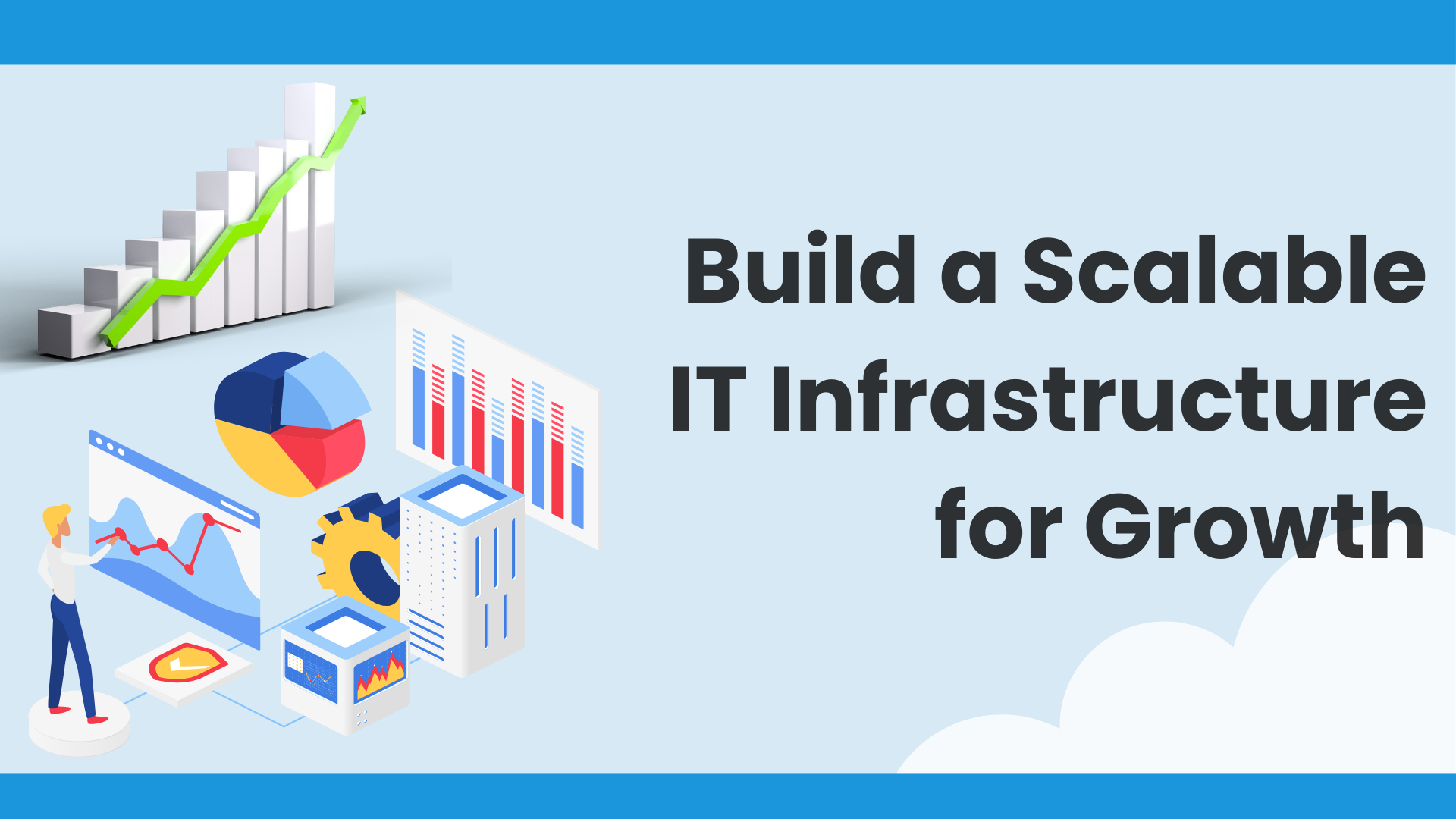When businesses grow, their IT infrastructures have to grow as well. Why? Increased demand necessitates increased efficiency, structural support, and security as a company becomes larger. Building a scalable infrastructure for your IT can be tricky; however, with the right approach, you can ensure your business remains agile and competitive. Today we’ll give our rundown on how to build a scalable IT infrastructure for your quickly growing business!
1. Assess Your Current IT Infrastructure
Now more than ever, the first step of any technical fix is to have your current stack audited. Before making any changes to your IT infrastructure, it’s important to understand the infrastructure itself and any issues there may be. That’s why it’s important to conduct a thorough assessment to identify the strengths, weaknesses, and areas of improvement of your business. Evaluate your hardware, software, network, and security to determine the effectiveness as well as scalability – i.e., the effectiveness in the future.
Key Areas to Assess:
- Hardware: Servers, computers, and networking equipment.
- Software: Applications, operating systems, and licenses.
- Network: Bandwidth, connectivity, and network architecture.
- Security: Firewalls, antivirus software, and data encryption.
2. Define Your Business Goals and IT Needs
IT infrastructure isn’t something that is a standalone project – nope. You’ll need to align the infrastructure with your business goals and objectives. Determine what your business needs and how IT can achieve this in the short and long term. With that, you can then find what IT requirements are even necessary to support these goals because at one point, you may realize you don’t need to stress on the unnecessary things. Take into consideration:
- Expected growth rate
- Increase in data volume
- Need for remote access
- Regulatory compliance requirements
3. Invest in Scalable Hardware and Software
Now you have a roadmap. What next? Well, now you take the step of investing in the scalable hardware and software to make this all possible. Choose solutions that can be easily upgraded or expanded as your needs evolve. Look for modular systems allowing for the addition of components without significant downtime or cost.
Scalable Hardware Options:
- Servers: Opt for virtual servers or cloud-based solutions that can scale with your business.
- Storage: Choose storage solutions that offer easy expansion, such as Network Attached Storage (NAS) or
- Storage Area Networks (SAN).
- Networking Equipment: Invest in high-quality routers, switches, and firewalls that support scalability.
Scalable Software Options:
- Cloud Services: Utilize cloud-based software and services to reduce the need for physical infrastructure and enable easy scaling.
- Virtualization: Implement virtualization technologies to maximize the use of existing hardware and streamline resource management.
- Enterprise Resource Planning (ERP) Systems: Choose ERP systems that can grow with your business and integrate with other software solutions.
4. Implement Robust Network Architecture
Network architecture is the heart of all scalable IT infrastructures. Design your network how you want, however, don’t forget to support high performance, reliability, and security. Consider using a combination of wired and wireless networks to accommodate different devices and users.
Key Considerations:
- Bandwidth: Ensure your network has sufficient bandwidth to handle increased traffic and data transfer.
- Redundancy: Implement redundancy measures, such as backup links and failover systems, to minimize downtime.
- Security: Strengthen network security with firewalls, intrusion detection systems, and regular security audits.
5. Leverage Cloud Computing
Everything can be in your garage running on Windows 97 if you’d like. But why wouldn’t you choose to upgrade and make life easier? Enter cloud computing! This offers scalability and flexibility for growing businesses. By migrating to a cloud-first environment, you can reduce the need for physical infrastructure, lower costs, and improve accessibility. Cloud services can be easily scaled up or down based on your business needs which is another benefit.
Benefits of Cloud Computing:
- Cost Efficiency: Pay only for the resources you use.
- Scalability: Easily add or remove resources as needed.
- Accessibility: Access data and applications from anywhere, at any time.
- Disaster Recovery: Benefit from built-in disaster recovery solutions and data backups.
6. Implement Strong Security Measures
Have you seen in the news when a major tech company faces a cyber threat? When have you ever heard of the small mom and pop shop having hackers try to take them down? Exactly… However, as your business grows, so does the risk of cyber attacks. Implementing strong security measures is crucial to protect your data and IT infrastructure. Regularly update your security protocols and ensure all employees are trained in cybersecurity best practices.
Essential Security Measures:
- Data Encryption: Encrypt sensitive data both in transit and at rest.
- Access Control: Implement strict access controls to limit who can access certain data and systems.
- Regular Audits: Conduct regular security audits to identify and address vulnerabilities.
- Backup Solutions: Implement robust backup solutions to ensure data is not lost in case of a breach or hardware failure.
Takeaways
Most people never consider IT when they’re thinking about the future of scaling. And that’s their first and most critical mistake. Building a scalable IT infrastructure has shown to be key for growth. By running an audit of the current infrastructure, investing in scalable solutions, implementing robust network architecture, leveraging cloud computing, and maintaining strong security measures, you can create an IT ecosystem that not only supports current goals, but sets the path for future growth.
Ready to scale your IT operations? Message CETDIGIT today to learn how we take businesses from 0 to 100!




.png?width=352&name=Why%20Your%20CRM%20Isn%E2%80%99t%20Helping%20You%20Close%20Deals%20(And%20How%20to%20Fix%20It).png)
Leave a Comment